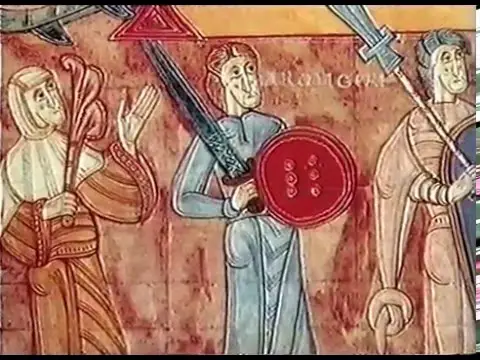VIDEO PIRAGÜAS 2ª PARTE
Este artículo investiga la participación popular en salud en barrios de la periferia de La Plata (Argentina) en un contexto de vaciamiento de las políticas sociales de acuerdo a las regulaciones neoliberales que rigen cada vez con más fuerza en el país y en el continente. En este marco de crisis económica que afecta especialmente a la salud pública, los movimientos sociales se organizan para defender, resistir el empobrecimiento cotidiano y construir alternativas populares y colectivas de salud. El trabajo, sustentado en una investigación etnográfica, pretende reconstruir los modos en que los sujetos reconfiguran las formas de pensar la salud y la participación política en la vida cotidiana de los territorios a través de diferentes tácticas y estrategias de cuidado y construcción político-comunitaria.
INAUGURATION EXPO ZARAGOZA 2008
The organization of the library was initiated in 1852 by professors of the Institute, such as Antonio Osés, the first librarian, and Lázaro Manso. It is worth mentioning the figure of Mariano Loscertales who, from 1874 to 1897, worked hard to improve the space, equipment and organization of the Library.
Law 4/1990, of 29th June 1990, on the Libraries of La Rioja, which establishes the general lines regulating the library system of La Rioja, recognizes the Library as the central library body of La Rioja, which, thanks to the Regulations of the Library System of La Rioja (Decree 24/2002, of 19th April), is now called the Library of La Rioja, and also assumes the functions of the administrative service of La Rioja in library matters.
The nave of the church shows Norman Romanesque influences, while the cloister courtyard is dominated by the Renaissance style. In the cloister of the church there are three coats of arms of the Order of La Merced, the oldest of which dates from 1573, probably marking the beginning of the reconstruction of this part of the building. The other two coats of arms date from 1574 and 1590.
Un paseo por la Rosa Roja
Calderone, Antonietta. «El lenguaje de la libertad en el teatro político y patriótico del primer tercio del siglo XIX», en 1808-1812: los emblemas de la libertad, eds. Alberto Ramos Santana y Alberto Romero Ferrer (Cádiz: Universidad, 2009), 25-61.
Cowan, Brian. «Public Spaces, knowledge and sociability», en The Oxford Handbook of the History of Consumption, ed. Frank Trentmann (Oxford: Oxford: The Oxford Handbook of the History of Consumption. Frank Trentmann (Oxford: Oxford University Press, 2012) https://doi.org/10.1093/oxfordhb/9780199561216.013.0013
Goldstein, Robert, «Political Theater Censorship in Nineteenth-Century in Comparative European Perspective», European History Quaterly 40-2 (2010): 240-265. https://doi.org/10.1177/0265691410358935
Quin, Michael Joseph, A Visit to Spain; detailing the transactions which occurred during a residence in that country, in the latter part of 1822, and the first four months of 1823. With general notices of the manners, customs, costume, and music of the country (Londres: Hurst, Robinson and Co., 1824).
Sala Valldaura, José María. «El teatro popular y la escena española, 1737-1798», en Historia del teatro en España, eds. María M. Delgado y David T. Gies (Cambridge: Cambridge University Press, 2012), 134-156. https://doi.org/10.1017/CBO9780511978623
«el pelo de la dehesa» de manuel bretón de los herreros
El Convenio Lord Eliot, o simplemente Convenio Eliot o Tratado Eliot (en español: Convenio Lord Eliot), fue un acuerdo de abril de 1835 mediado por Edward Eliot, III Conde de St Germans entre los dos bandos enfrentados de la Primera Guerra Carlista. Su objetivo no era poner fin a la guerra, sino a las ejecuciones indiscriminadas por fusilamiento cometidas por ambos bandos. Edward Eliot se había convertido en Secretario de Legación en Madrid el 21 de noviembre de 1821 y en 1826 fue llamado Lord Eliot.
Los carlistas reaccionaron inevitablemente desde su posición de debilidad ejecutando a sus prisioneros de esta manera, no sólo como actos de represalia sino también debido a las limitadas instalaciones con las que alojar a sus prisioneros. Al no poder llevar consigo a sus prisioneros en las campañas de montaña, por ejemplo, los carlistas los ejecutaban antes de trasladarse a un nuevo emplazamiento. Los soldados liberales encontrados escondidos tras la batalla de Alegría de Álava (27 de octubre de 1834), no fueron hechos prisioneros sino fusilados o bayoneteados en el acto,[2] y el comandante liberal durante esa batalla, Manuel O’Doyle, fue ejecutado por un pelotón de fusilamiento el 28 de octubre de 1834.

